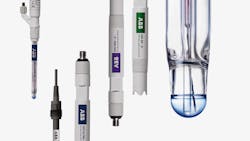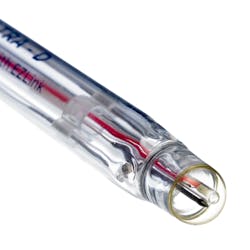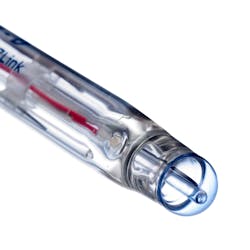Almost every industry requires some form of treatment for the water and wastewater used throughout the production process. Measuring the quality of both influent and effluent water is an essential element in determining the efficiency of each process, maintaining overall quality and ensuring that processes meet the strict regulatory standards governing them.
One of the key metrics to ensuring these standards are maintained is through measuring and analyzing pH levels. Although commonly associated with the water treatment industry, pH measurement in fact plays a vital role across a vast range of industries. In the food industry for example, it can influence a product’s taste and preservation characteristics. In other sectors such as textiles, pulp and paper manufacturing and agriculture, pH measurement can also play a key role.
What Is pH? A Quick Refresher
pH describes the hydrogen potential of a substance or, in other words, the concentration of hydrogen ions in a solution. It is expressed using the pH scale, on which solutions are graded from 0 to 14. A solution with a pH of less than 0–6 (i.e., large number of hydrogen ions) is considered acidic, while a pH of 8–14 (i.e., low number of hydrogen ions) is basic. A solution with a pH of 7, equivalent to pure water at 25°C, is considered neutral on the scale.
Why Is pH Important?
The pH scale is logarithmic, and therefore small changes in pH value can equate to much larger variations in practice. For instance, a solution at pH 4 is 10 times more acidic than a solution at pH 5, and 100 times more acidic than pH 6. This is why keeping a close eye on pH values is important in so many industrial processes, as a small drift can have a significant effect on product quality as well as process efficiency and safety, both for workers and end customers.
Treatment of potable water and wastewater is one of the most common applications where pH measurement is used. Water at the lower end of the pH scale can degrade pipes and taps, allowing toxic materials to seep into the water supply. If the pH level is too high, it can cause an unpleasant taste. In wastewater treatment, pH levels must be controlled to ensure optimal conditions to achieve the required chemical or microbial reactions and ensure that the process runs efficiently.
In food and beverage applications pH levels are vital in creating the right physical and chemical reactions to ensure that the taste of products is palatable and consistent. Managing ingredients such as yeasts and molds, which behave differently at different pH levels, is crucial to ensuring final product quality while also ensuring that undesirable pathogens cannot develop. The pH levels of the water supply used for washdown duties must also be managed to ensure its safety.
In the textiles and pulp and paper industries, specific pH values affect the color and fading qualities of dyes, while the wastewater generated by paper-making processes can contain particles that will damage machinery if allowed to accumulate over time.
Agriculture is another industry that requires careful management of pH, as it is an important factor in ensuring that soil is at the right conditions for plant growth. If pH falls outside the optimal range, it must be altered by adding acidic (such as native sulfur) or alkaline (such as lime) material. The optimal conditions will depend on the type of crop being grown.
In the oil and gas industry, pH measurements are used in a number of applications, such as to ensure that the separation process used in desalting is optimized while also reducing the likelihood of corrosion in wastewater.
How Is pH Measured?
In order to control pH levels within a process, you first have to be able to measure it. There are several methods of pH measurement, ranging from simple solutions such as indicator papers to more sophisticated and more accurate electrochemical methods, including digital sensors and transmitters.
The most commonly used types of digital measurement incorporate two electrodes — a glass measurement electrode and a reference electrode — through which the solution to be measured passes. The electrodes will generate a voltage difference between them, which is directly proportional to the pH level of the solution, providing an accurate pH value. Modern measurement systems can provide continuous measurement while increasingly incorporating additional features suited specifically to industrial applications such as fieldbus compatibility and explosion-proof design.
Choosing the Right Sensor
Clearly the appropriate sensor will vary from application to application, with a range of factors to consider. Where will the sensor be installed? What are the characteristics of the solution being measured? Can the sensor be easily accessed for maintenance or electrolyte top-up?
pH electrodes are constructed from a special glass, which is composed of alkali metal ions. These ions react with the hydrogen ions in the solution to generate the potential difference, which in turn generates the pH measurement. Different glassware is available for low or high temperatures, or with increased resistance to acid and/or fibrous build-up.
pH sensors are generally fragile and have a finite lifespan. The demanding nature of many pH measurement applications can take a toll on even the most rugged pH sensors. Electrode lifetime is known to be difficult to predict — sensor failures can occur slowly, such as the gradual poisoning of the reference electrode, or they can occur suddenly as in the case of pH electrode breakage. Modern sensors now include intelligent diagnostics to maximize electrode service life, allowing operators to receive early warning of electrode poisoning or other issues before they develop into failures.
Varying sample temperature is one of the most common causes of pH measurement errors. A sensor with temperature compensation can improve accuracy. In ABB’s sensors, for example, this is achieved by locating the pH electrode, reference electrode and inbuilt temperature sensor together at the electrode tip, improving the quality of measurements for applications with variable sample temperatures while also reducing calibration costs.
The durability and efficiency of the sensor is clearly important, but analyzing the data produced is also a key part of the sensing process. Developments such as ABB’s own EZLink sensor connection technology enable plug-and-play sensor connection, making it easy to connect and configure the sensor to the transmitter. This reduces installation time while ensuring electrical noise interference is minimized for maximum signal strength. The digital output removes the need for high impedance cable, allowing longer distances between sensor and transmitter without compromising accuracy.
With so many variables at play, choosing the right sensor can seem overwhelming. To address this, ABB has streamlined its sensor range into three application-based groups. The first of these groups includes entry level electrodes for general process or low conductivity applications. The second group features more durable electrodes for harsh processes, featuring enhanced poisoning resistance and ATEX/IECEx certification for use in hazardous areas such as petrochemical and chemical processes. The third group includes specialist electrodes for the most demanding high purity applications.
For a simple instrument, pH sensors can have a big impact on both process efficiency and the final quality of the end product being treated or produced. With developments in both sensor diagnostics and analyzer technologies, it is becoming easier to be able to make sure that today’s sensors are offering the highest levels of performance when and where it matters most. WT
About the Author: Nik Siwek is a continuous water analyzer global product manager for ABB’s Measurement & Analytics Division. He has more than 13 years of experience with analyzers in the municipal and industrial markets and holds a BS in Chemical Engineering.







